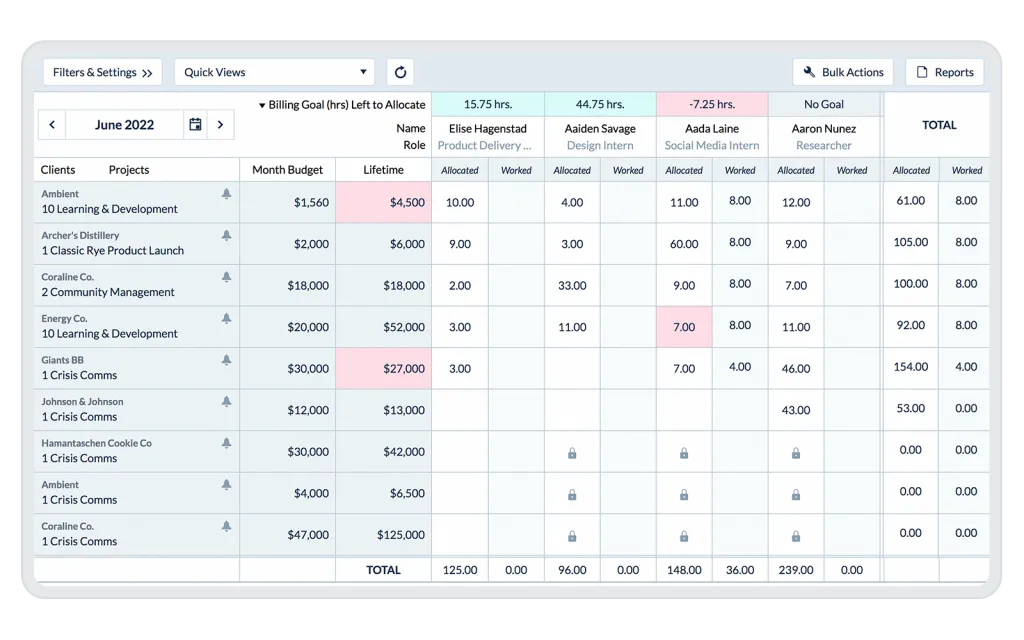At its core, the problem of resource allocation comes down to a simple premise: given a limited set of resources, how can you best utilize them to reach a desired result?
In business, as in life, coming up with a strategy to allocate resources effectively can pay huge dividends. In the real world, however, we all know that resource allocation - assigning work, making budgets, planning for the future - often gets pushed aside in favor of simply doing the work.
It's a little like exercise: we know that it benefits us, but when it comes time to actually hit the gym, it's easy (a little too easy, sometimes!) to take a pass.
While resource allocation is often treated as a problem only for Project Managers, in fact viewing all management through the lens of resource allocation can help you sort out complicated decisions. Here are some critical thoughts on why.
Employee Resource Management Drives Most Managerial Decisions
Managing is about successfully using the tools you have to meet your company's goals. And in most businesses, managersex get to operate a very powerful set of tools: their employees.
Using employees properly, however, is a difficult goal. As good managers know, employees tend to be happiest and most productive when they feel like their skills are being utilized well, and when they feel like they're contributing to a larger objective. It's the team that matters.
So how to make sure your team functions like a well-oiled machine? That's right: resource management. Knowing what jobs make different employees thrive gives you the power to allocate resources so that your team runs like a Formula One car.
In fact, nearly all basic managerial decisions - how much work can my team take on? Can we complete this job in time? Are we flexible enough to stretch in new directions? - come down to employee resource allocation.
Thinking about Resource Allocation Makes Hiring Easier
For managers who need to keep an eye on finances, hiring can be a vexed problem. Employees cost a lot, and you want the cost outlay to be worth it. This dilemma can be especially acute when the issue is deciding between hiring a full-time employee or hiring a part-time employee.
Here's a scenario: your team only needs a little more help now, so hiring a temporary employee seems like the right decision. On the other hand, a full-time employee might help you expand your capabilities, allowing you to take on more work.
How to decide? Again, thinking strategically about resource allocation can help. What demands are receiving less attention then they should? Do you have resources you can allocate to them without hiring? What demands can you see coming down the pike, and how well set up are you to handle them?
To honestly answer these questions, you need to track your resource allocation, especially if you want to move away from a "gut feeling" approach to management.
The Resource Allocation Tool You Use Will Change the Way You Allocate Resources

Ok, so you know that thinking about managerial tasks as problems of resource allocation can help you make more objective decisions. Maybe you're even committed to taking a more strategic approach.
One thing to keep in mind is that how you allocate resources can depend greatly on what resources you measure, and how you measure them.
Given this, it's worth trying out different allocation tools, to see which ones work best for your situation. Do you need a tool that focuses on big picture issues? Or one that gives you a more granular view of how many resources are used on specific tasks, projects, and ideas?
In all cases, time-tracking software can give you a true picture of how employee time gets used. According to the business consulting gurus at McKinsey, time management is the key to allocating resources properly.
Resource Allocation is a Fluid Process
Good managers are often like gymnasts: incredibly flexible. Projects change, goals change, teams change. Successful managers confront this by allocating, then measuring, then evaluating, then re-allocating, then repeating the whole thing again.
In business, the process is often called a "feedback loop." The idea is that you create an output (an allocation strategy), see how it does, then use the information you gain to drive a new allocation strategy. In some cases, you can use this process to keep refining your strategy. In others (i.e. most of the time!) the world changes so quickly that you need to start rethinking things almost immediately.
Project Managers Should Communicate Resource Allocation Strategies with Their Employees
Employees, generally, hate being kept in the dark. Making sure your team members know not only what you're asking them to do, but why you're asking them to do it is one surefire way to improve both job satisfaction and productivity.
As a Project Manager, you're often balancing all sorts of resources, including (but not limited to) money, time, and people. Letting employees know how you're balancing these can go a long way toward making people feel important and empowered.





